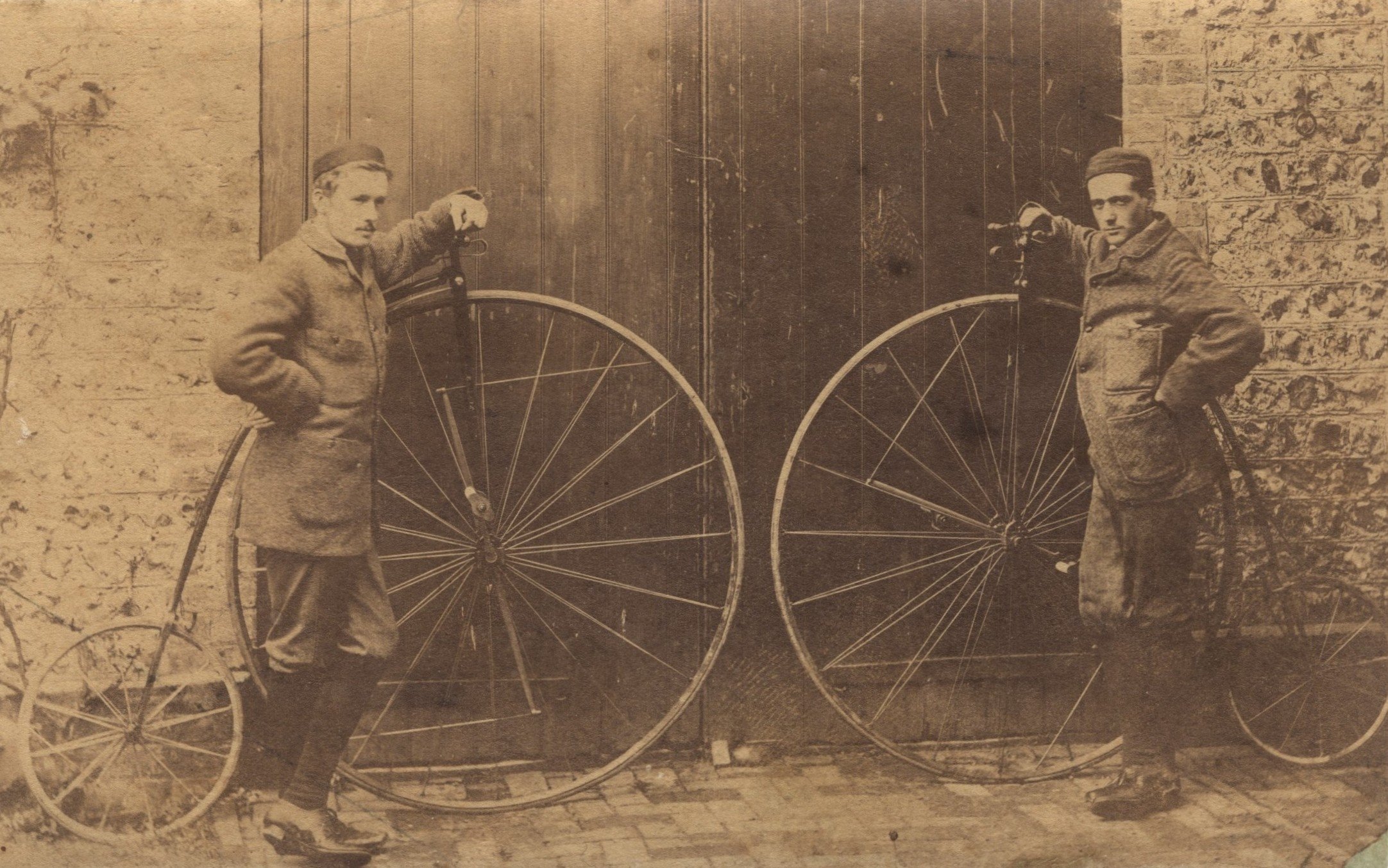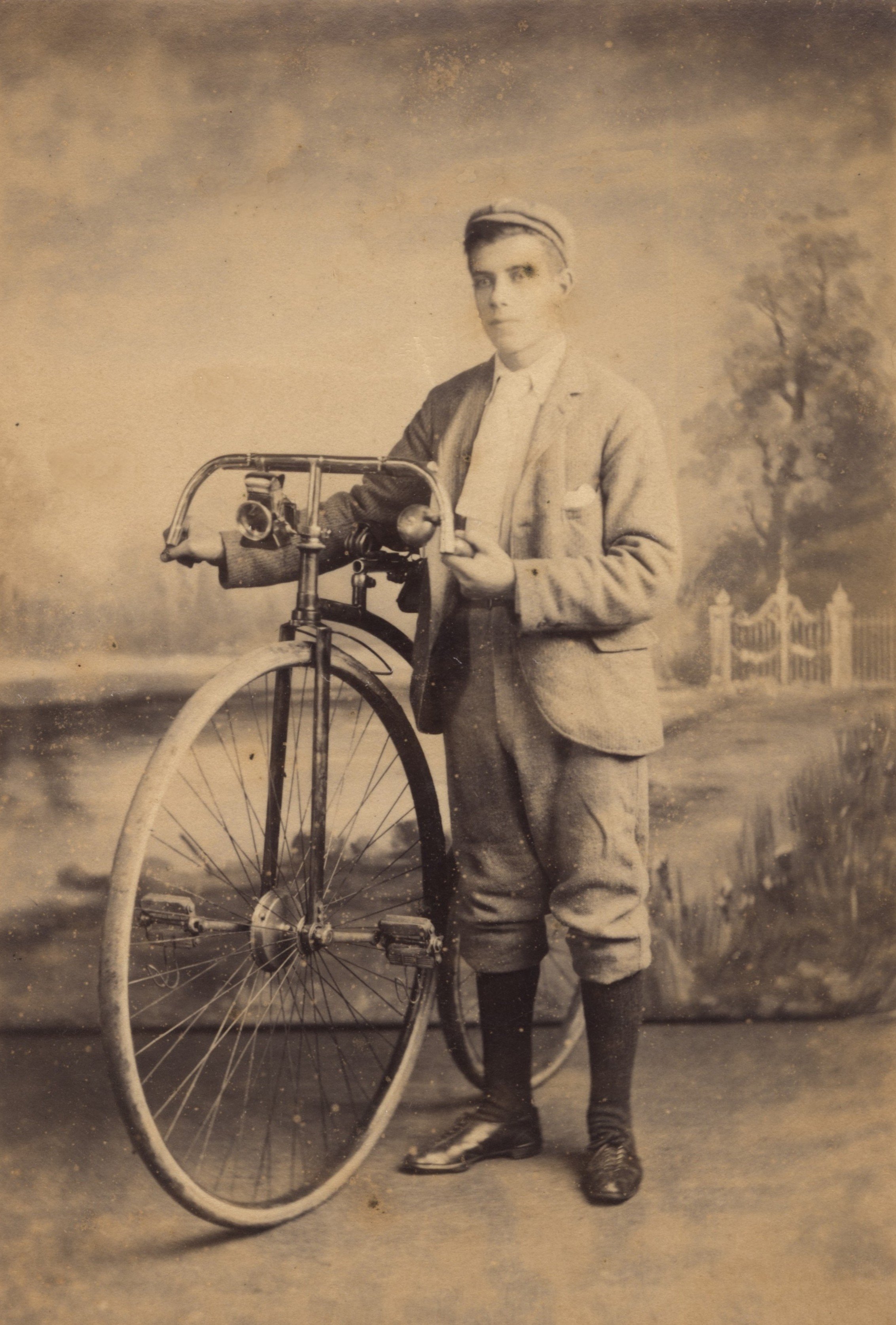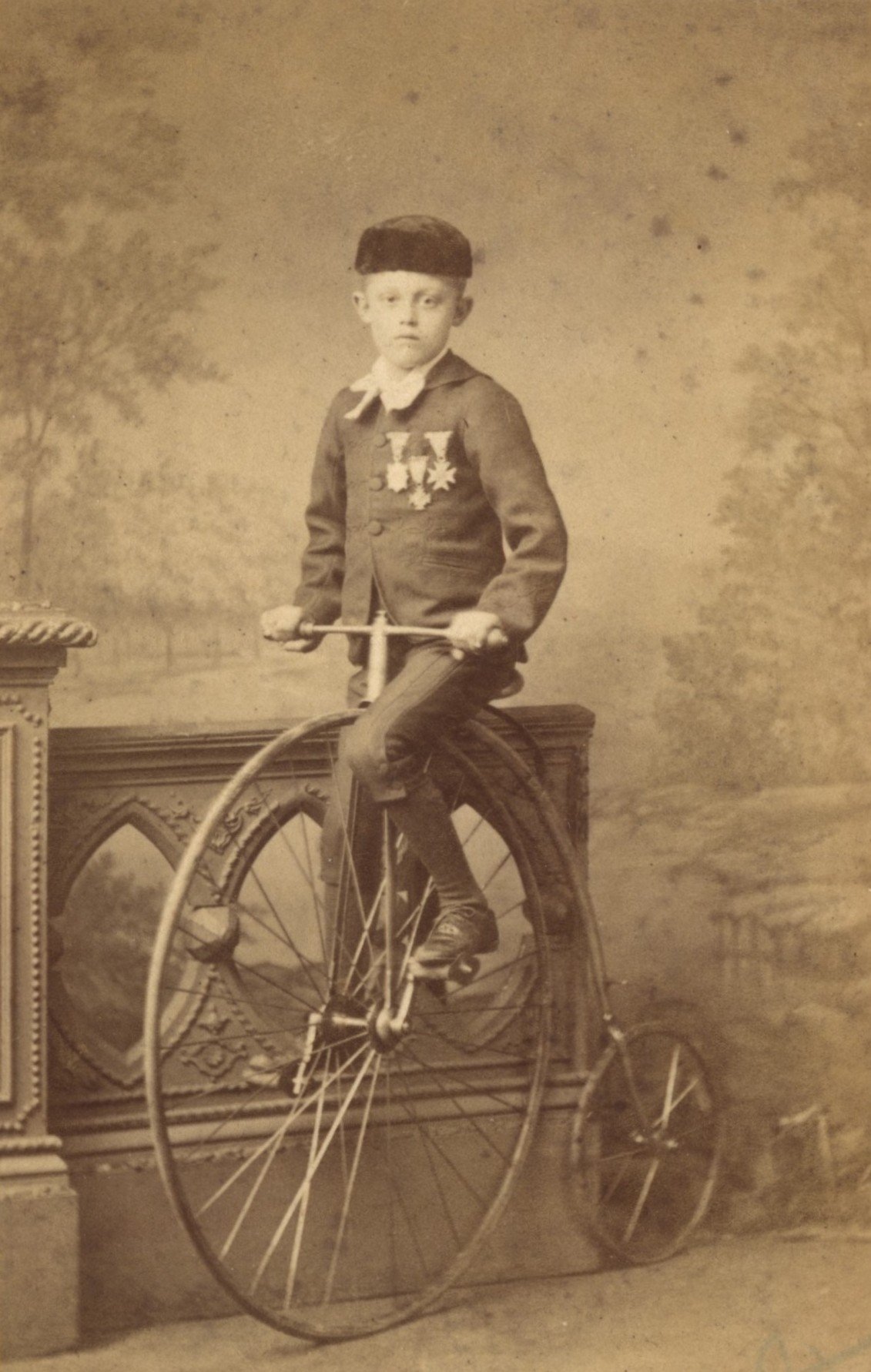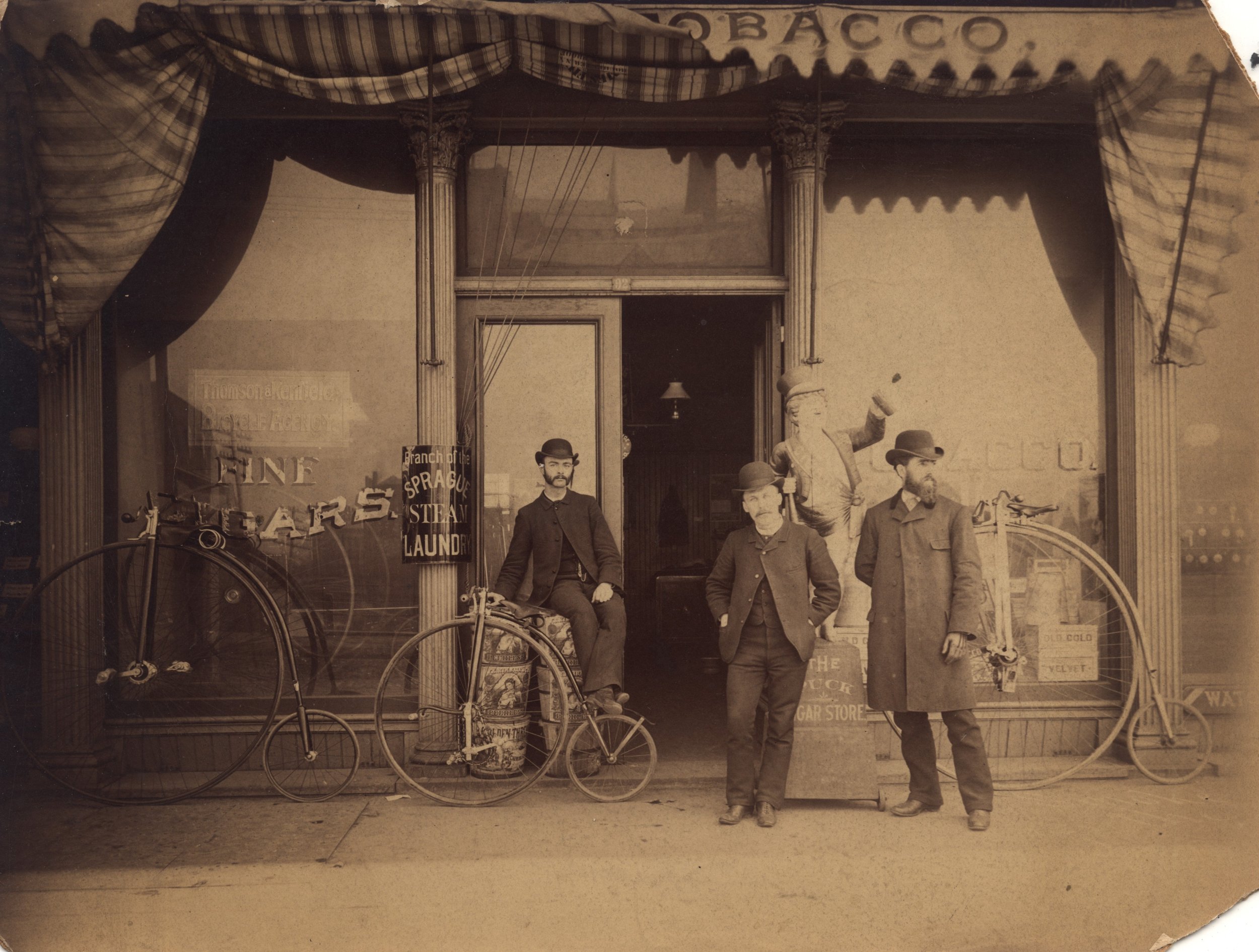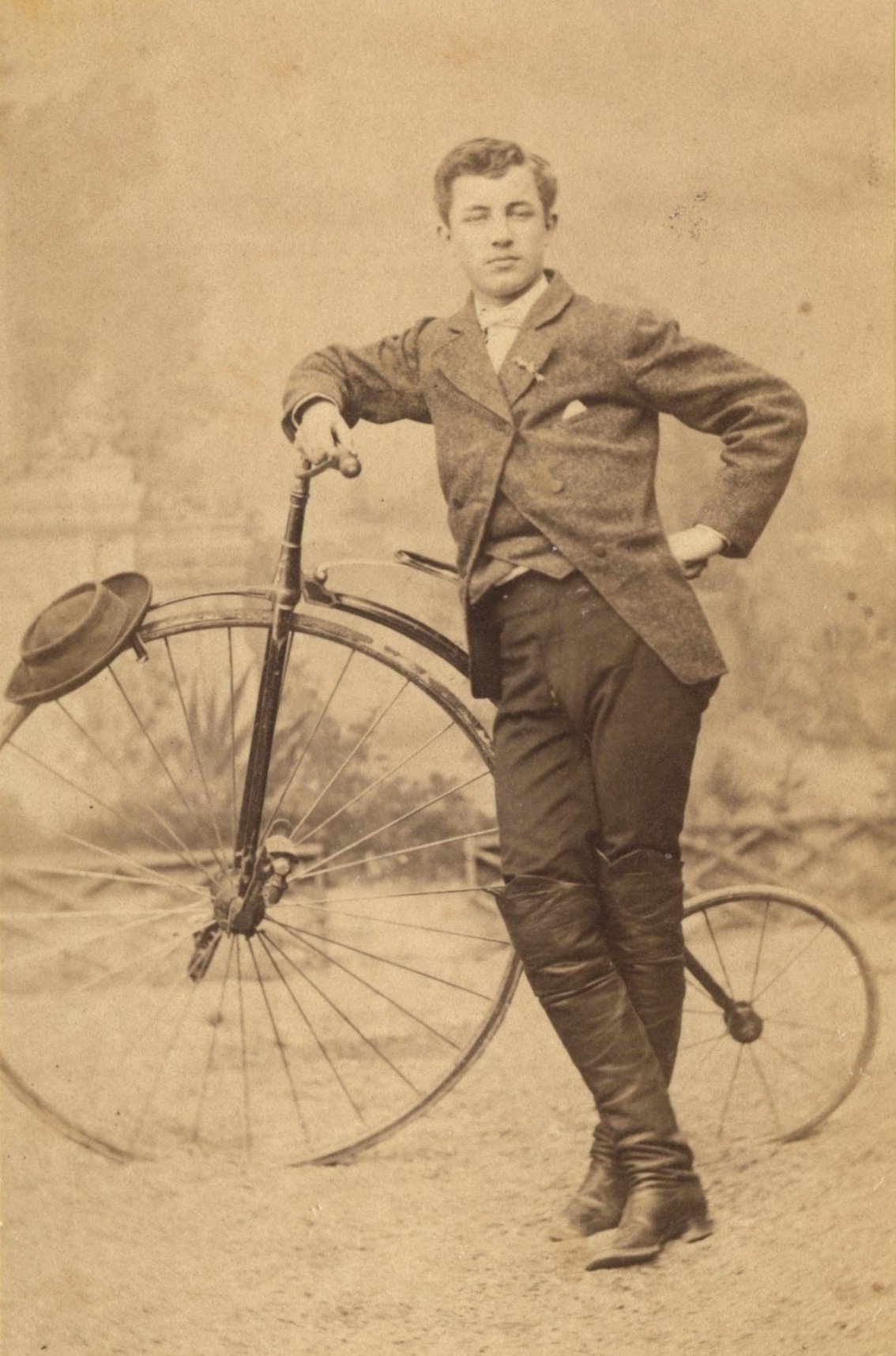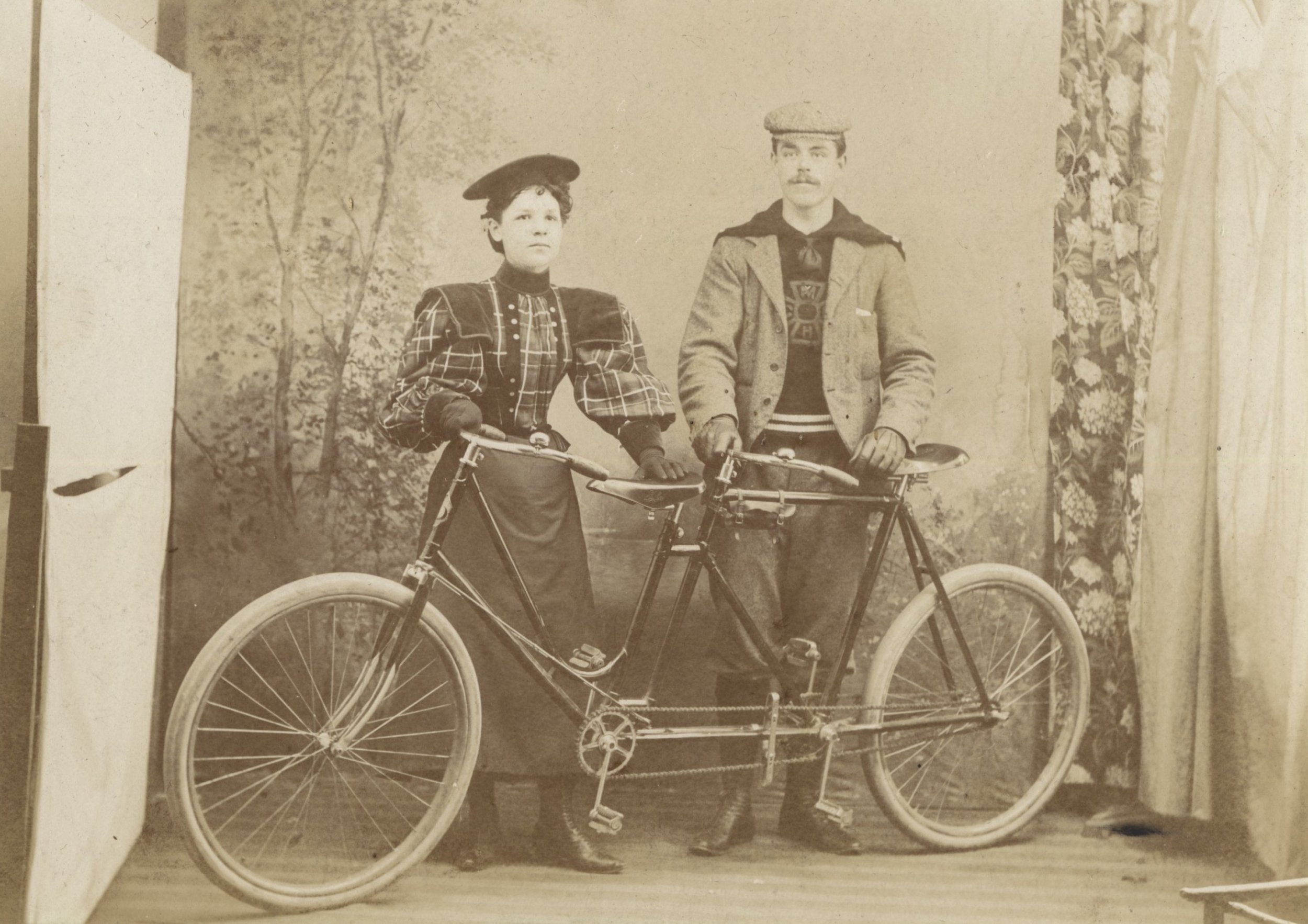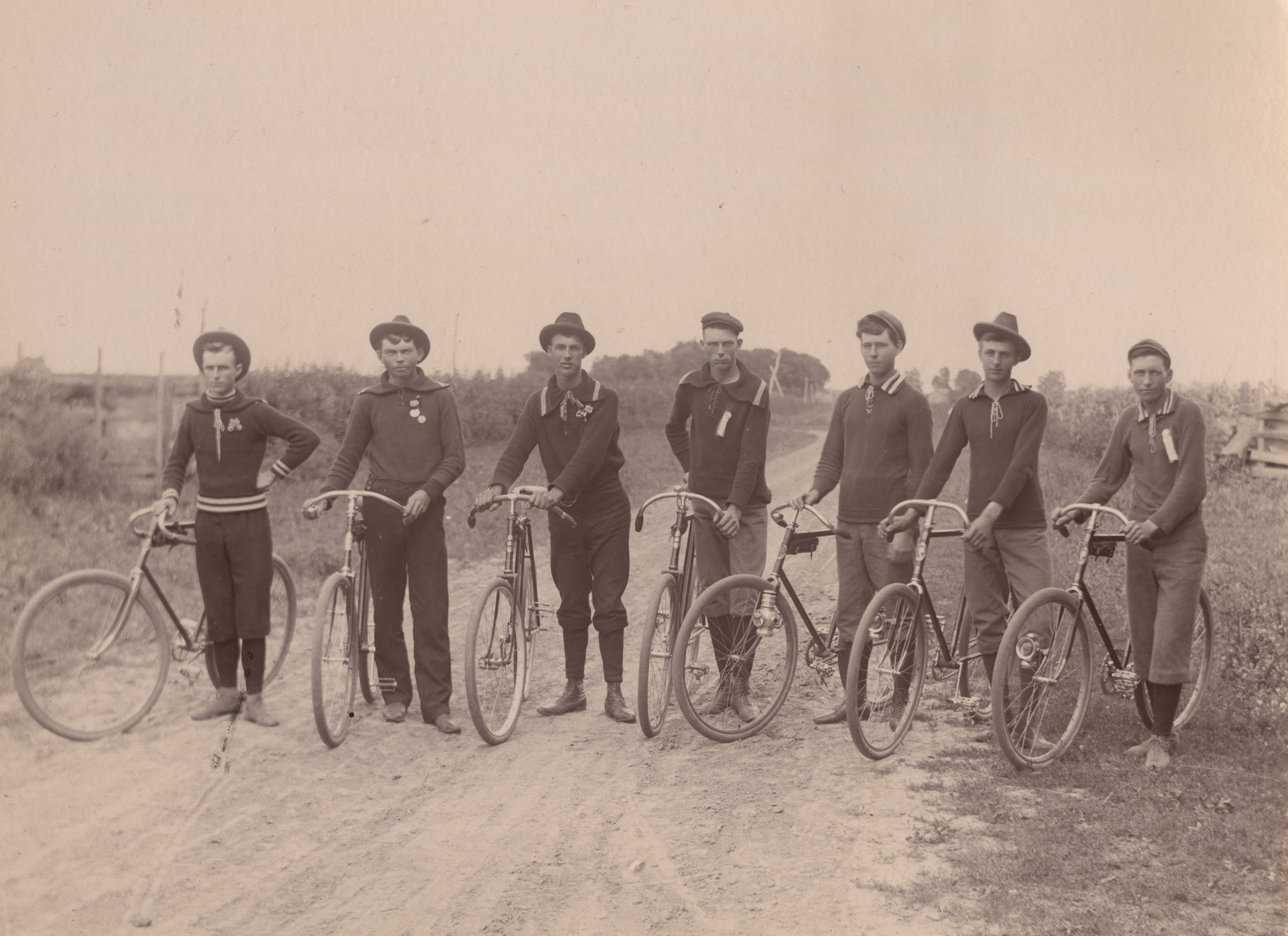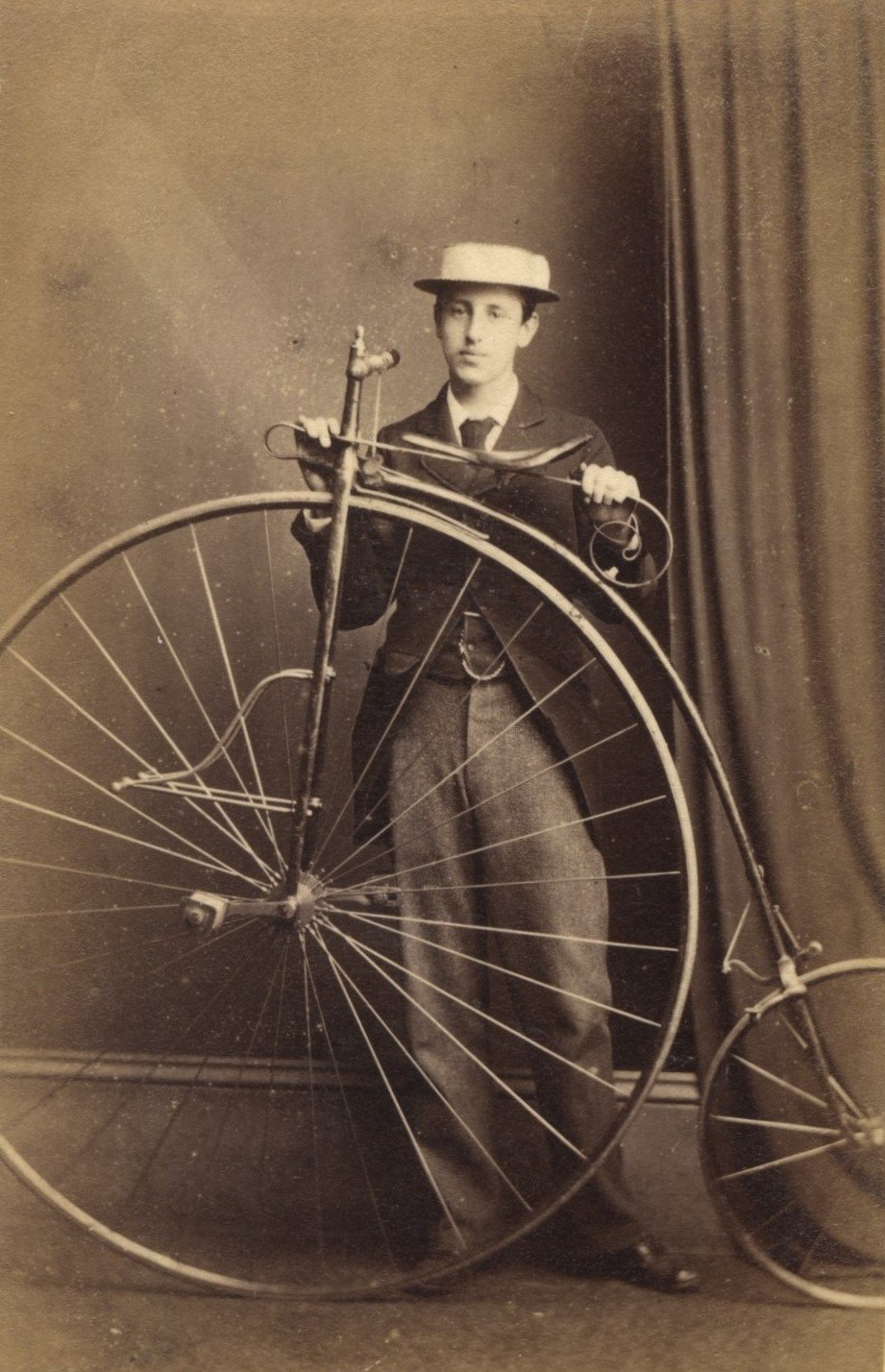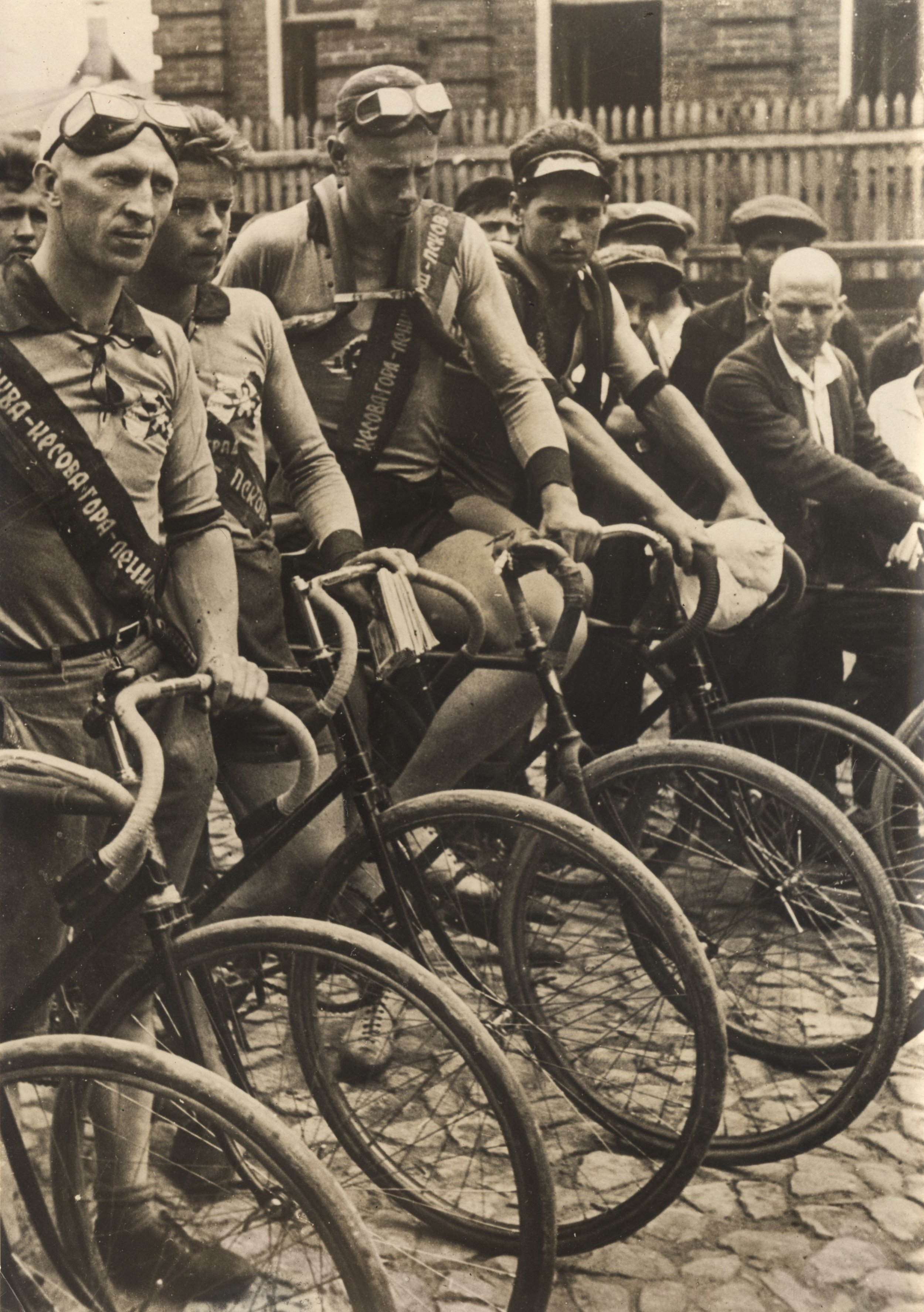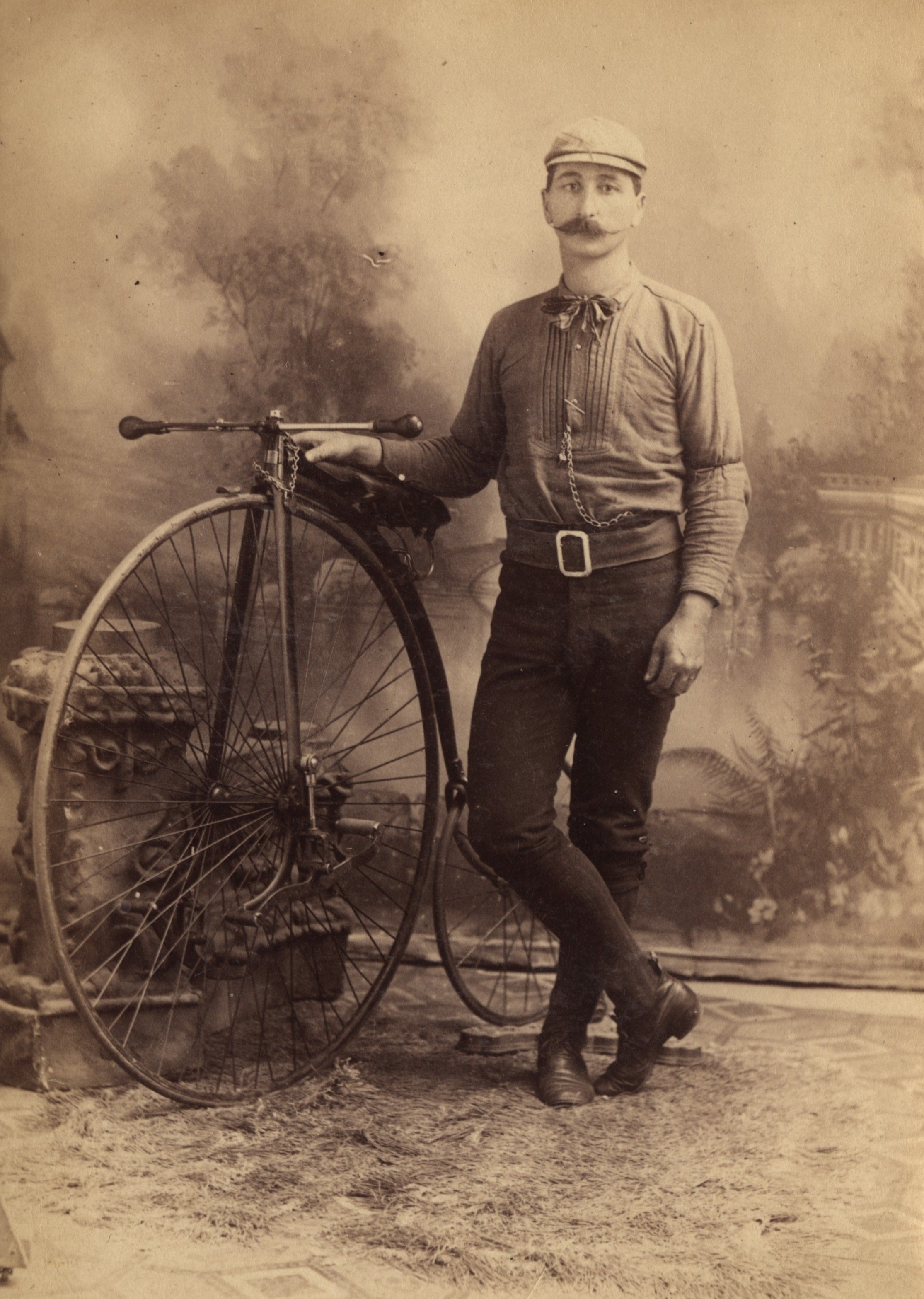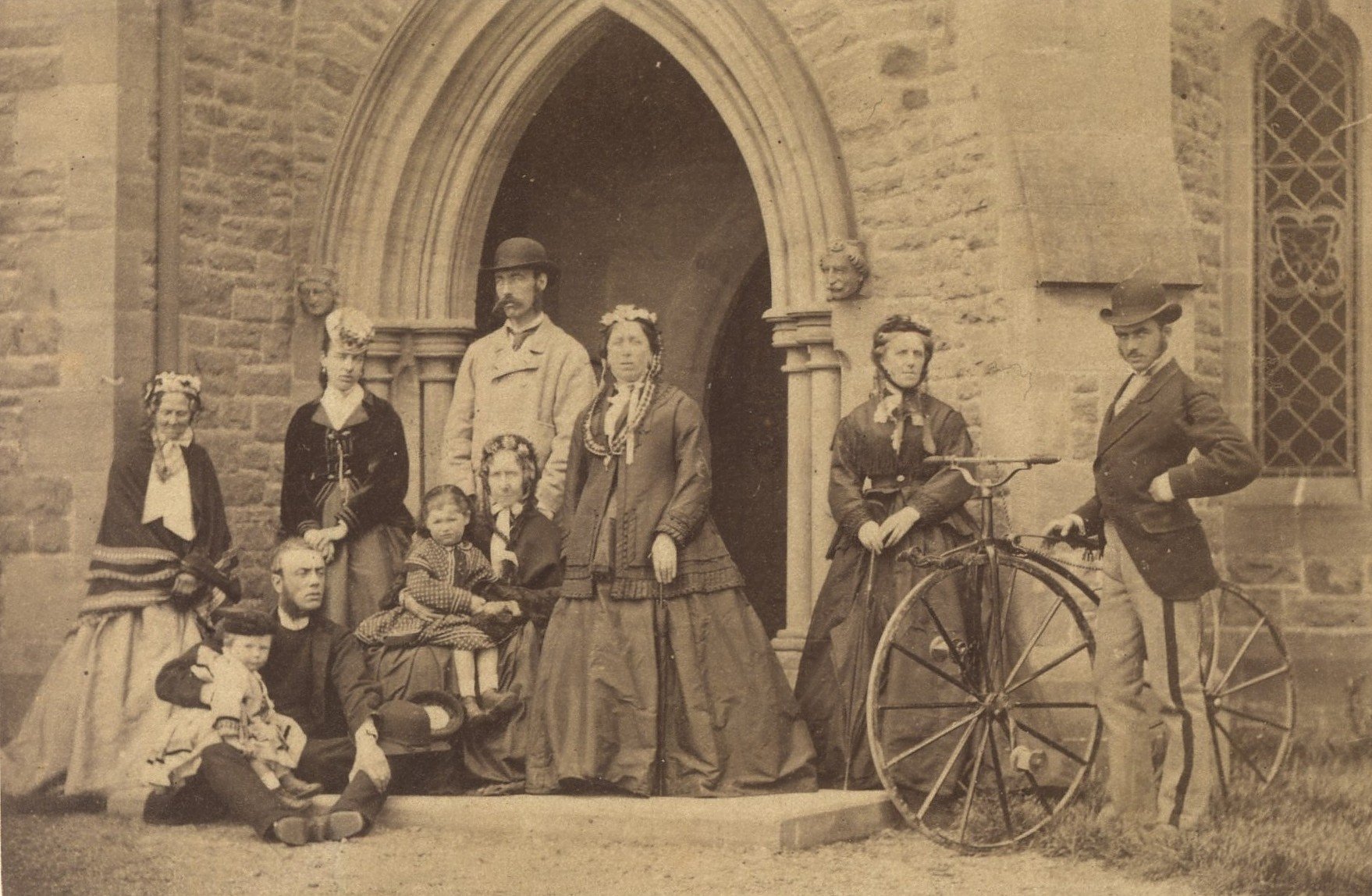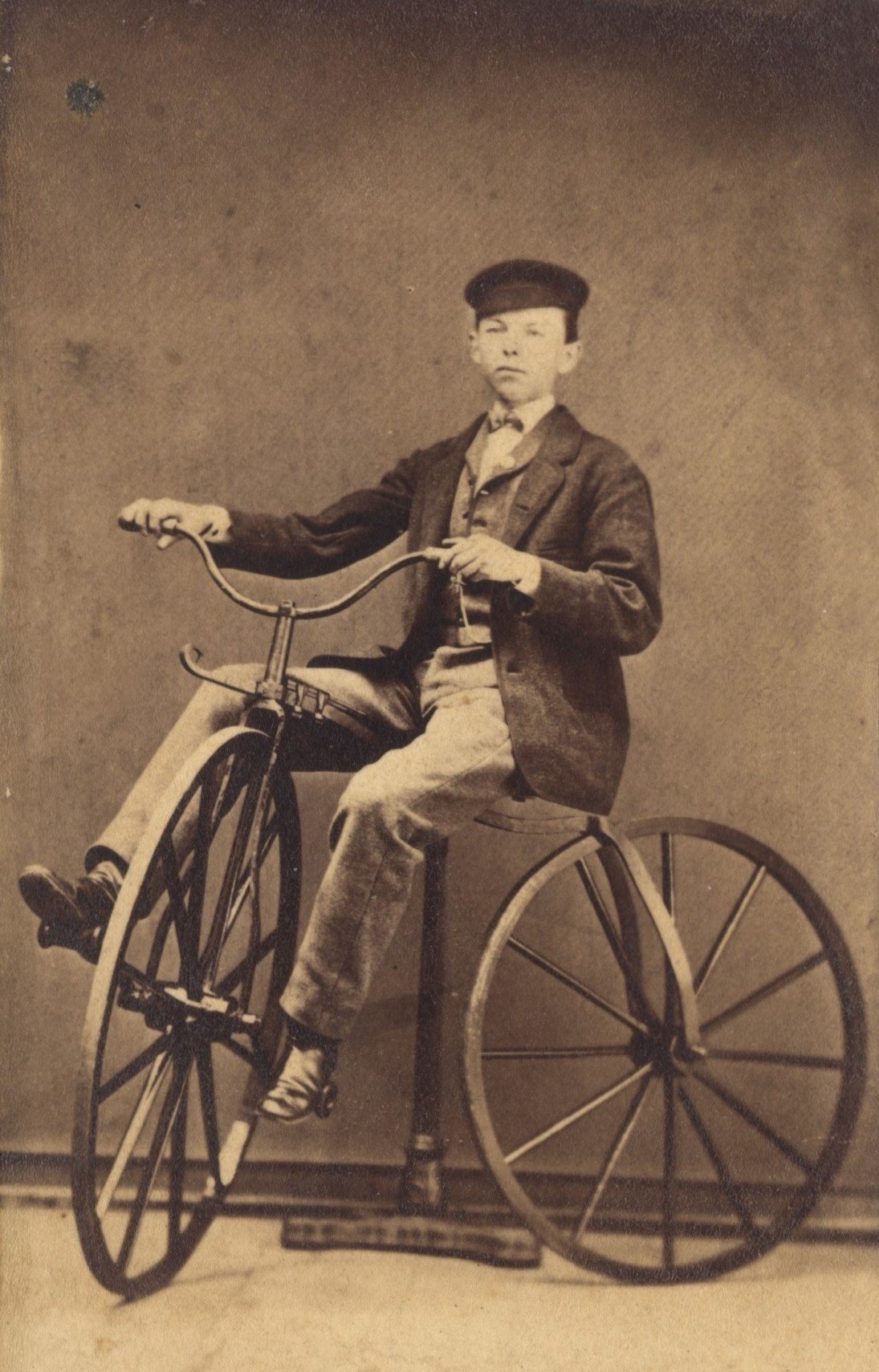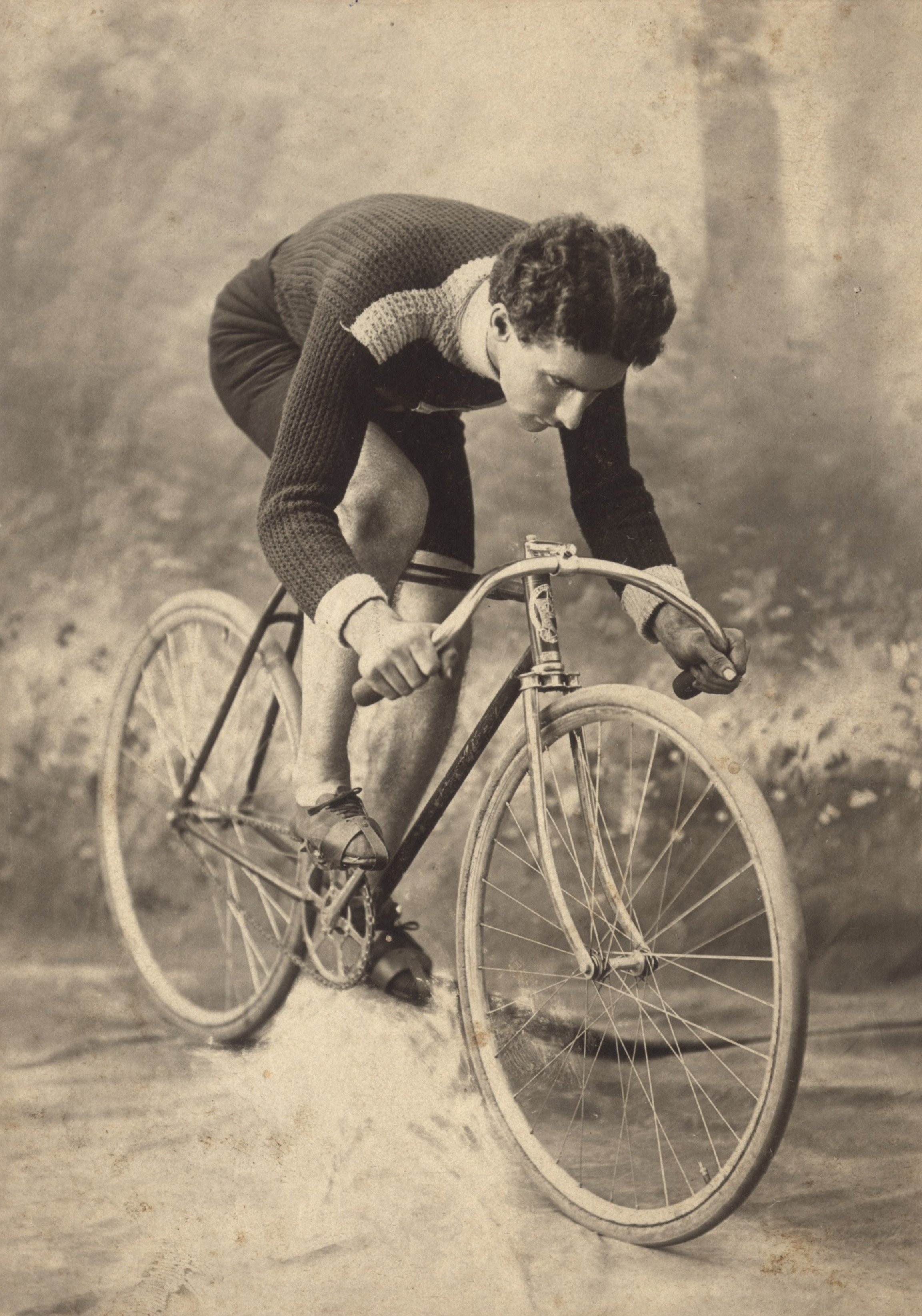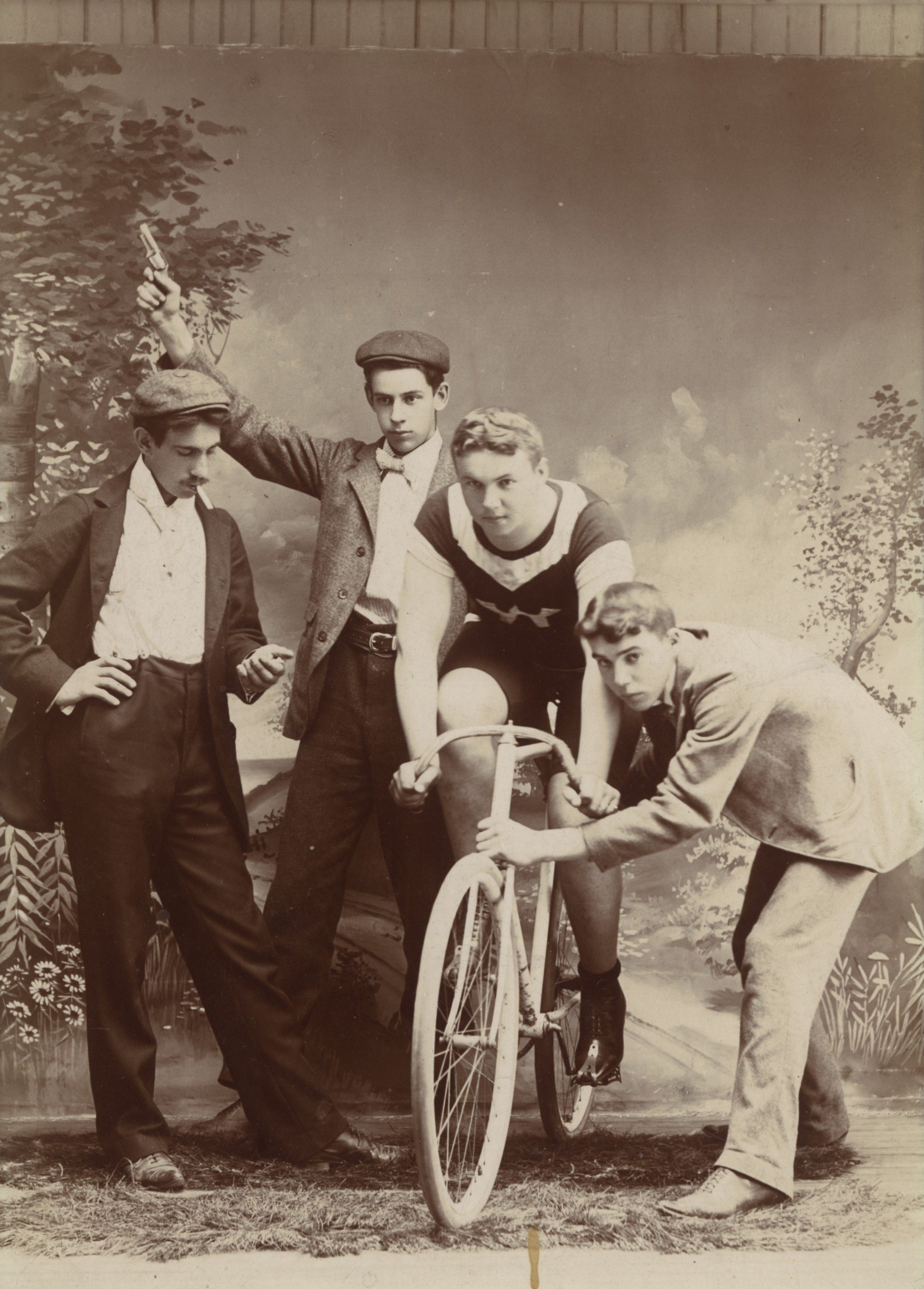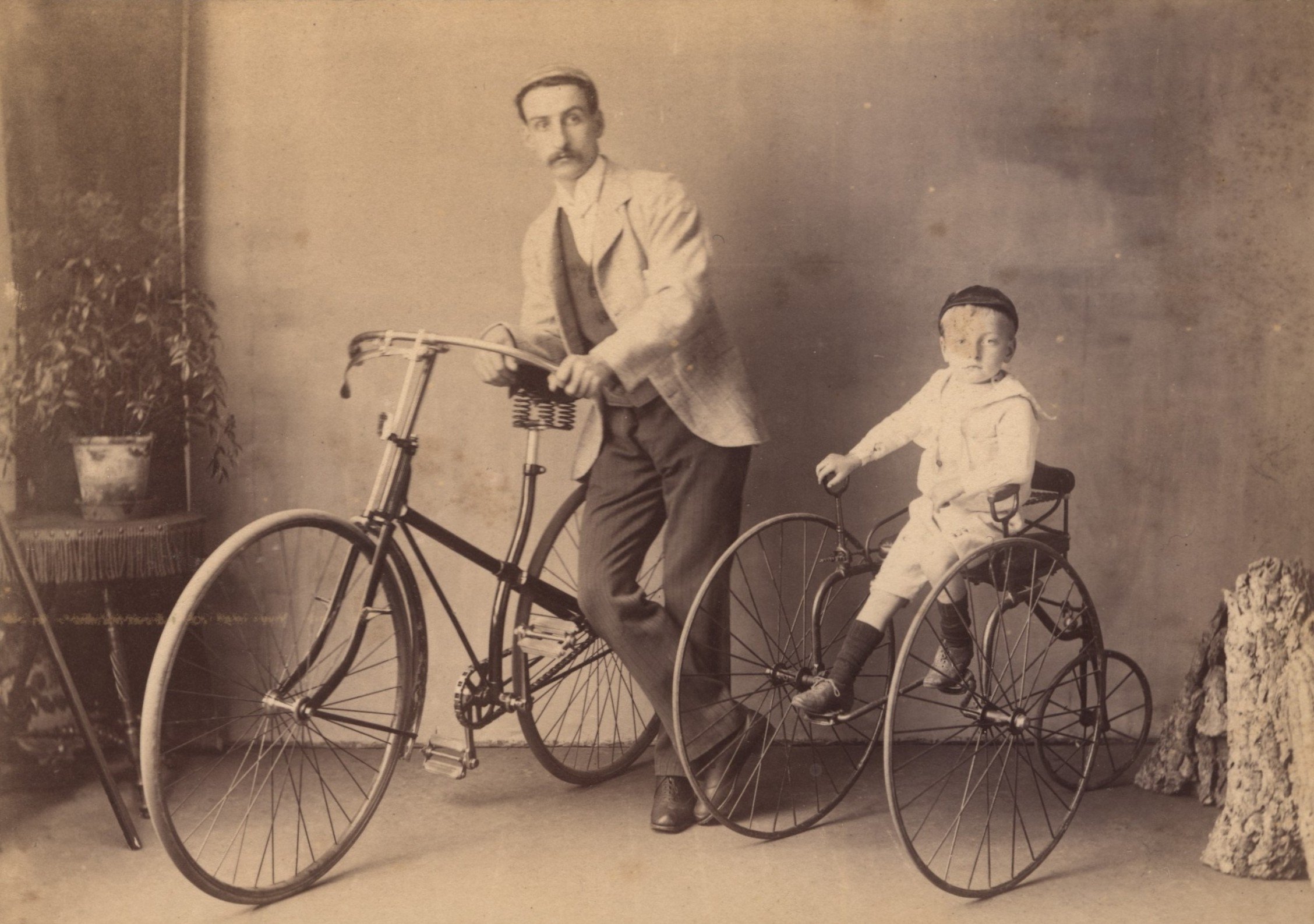Pedaling Through History: 150 Year of the Bicycle
The Collection of Glenn Eames
The Henry Sheldon Museum is pleased to partner with Glenn Eames, a vintage bicycle collector and cycling historian of Burlington, Vermont in presenting Pedaling Through History: 150 years of the Bicycle.
The concept for the exhibit began with a chance meeting several years ago between Sheldon Museum Executive Director Bill Brooks, a former amateur endurance athlete, and Glenn Eames, then owner of the Old Spokes Home in Burlington’s Old North End. Both are historians, avid bicyclists, and drawn to the artistry and design of bicycles and related equipment and promotional material. They join forces in celebration of the bicycle. They also have vivid childhood memories of learning to ride a two-wheeler, the accomplishment, pride of ownership, and sudden freedom that resulted.
2016 marks the 150th anniversary of the 1866 first patent in the world for a pedal bicycle, filed in the United States, surprisingly by a Frenchman, Pierre Lallement, living in New Haven, Connecticut. The patent was filed in April and granted in November 1866. Glenn’s extensive, comprehensive bicycle collection highlights bikes from the 1860s to 1899, but also on display are his bikes from the 20th century. The more recent bicycles are lent by Vermont companies, a tandem from RAD Innovations of Cornwall and a Fat Bike from Budnitz Bicycles of Burlington.
Pedaling Through History fulfills the Sheldon’s founding missions as an art museum and a history center. We are most grateful to Glenn Eames, who has made the exhibit possible. He not only brings a world-class collection to the Museum for your enjoyment, but in-depth historical knowledge and passion, and just as importantly critical appreciation of the design, beauty, and engineering of the bicycles. His photographs and bike-related accessories, along with those lent by Lorne Shields, complete the encyclopedic narrative of bicycle history.
Enjoy pedaling through history and pedaling safely through the Vermont countryside.
Bicycle Models on Display
Click on the photos for more information!
Women and Bikes
The popularization of the bicycle among women brought about profound social changes. From the possibility to travel longer distances unaccompanied, to more comfortable dressing standards, the bicycle expanded the horizons for women. It became a medium and a statement of women’s liberation.
Many 19th century Americans regarded cycling as not suited for a woman of refinement. Several theories related to health or morals supported that notion. Some doctors argued that riding a bicycle deteriorated women’s pelvic muscles, making it harder to give birth. Others were concerned about women being sexually stimulated by the saddle. Bicycle manufacturers, however, saw a lucrative business in the growing market of female riders. In the late 1880s, bicycles with lowered saddles, like the Stearns Lady safety on display, started to appear. The lowered upper-tube was designed to fit the long skirts of female riders. In 1894, Albert Pope, manufacturer of the Columbia bicycles started to feature female riders in his advertisements. In this way, he endorsed women’s struggle for the right to ride.
Feminist activist saw in the bicycle a form of empowerment. For instance, Susan B. Anthony, a 19th century activist for women’s suffrage, said at the time that “it [the bicycle] had done more to emancipate women than anything in the world”.
Antique Photos with Bicycles
